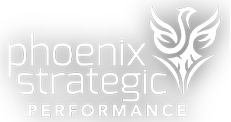This blog was co-authored by Joanne Flynn, Jim Bosserman and Debbie Gower. This article brings together perspectives and research from three strategic performance and learning and development professionals.
As we described in last week’s discussion, the first blog in our learning & development (L&D) series, L&D is critical to an organization’s success. It’s not surprising that CEO’s of organizations continue to assert that talent is their #1 or #2 concern, particularly as it relates to skill gaps. [1]
Significant business change typically requires:
- Reassessment of business strategies, operating models, organization structures and competencies (i.e., knowledge, skills and behaviors) to address the very nature of work being performed
- Answering the questions of our people: “How do I get my job done to my very best ability?” and “What is in it for me?”
Therefore, to work at an organization’s optimal potential will require:
Reprioritizing learning & development through leadership’s commitment and participation:
Reprioritizing means we must make our L&D programs more relevant and strategically aligned with what is happening in the business today. To achieve this objective, leadership at the enterprise level must involve the L&D function to assist business units with growth and transformation. Importantly, leaders must reprioritize L&D’s efforts to develop talent in order to:
- Capitalize on opportunities by being agile
- Sustain performance through anticipated dips
- Accelerate peak performance and the return on its investment
Our experience reveals that learning must become a strategic priority and an investment, especially during significant change, in order to exceed expected results and really engage your people. Interested in knowing why? We have a case study that shares our experiences and hits at the heart of “why” and “how” leadership makes a difference.
Let's start with the key answers to the question: Why is Leadership so important to L&D efforts around change?
- The right leadership is often void when change occurs.
- Your competition is not waiting until you figure it out.
- Leadership must not underestimate the impact of change on the organization.
- Leaders cannot “sneak up” on change just because they think it is going to be disruptive.
- Leadership and managers must not get distracted with business as usual…or not as usual.
- Sponsorship by leadership and continual participation is critical.
The consequences of lack of leadership during significant periods of change can be disastrous or lead to lack luster results at a minimun. Leadership, directed towards well-planned and aligned L&D efforts where there is a strategic priority, can create results that exceed expectations across financial and employee engagement by tapping the “minds and hearts” of your people and by answering the questions of:
“How I can do my job to the best of my abilities?” and “What’s in it for me?”
Learn more by reading the the 6 issues to consider about the importance of making learning a strategic investment in your people, as well as downloading the latest case study of how one business unit found, lost and refound the magic. Also, if you didn't get to read our first learning & development post in the series, you can read that here.
[1] PricewaterhouseCoopers, 17th Annual Global CEO Survey, 2014





